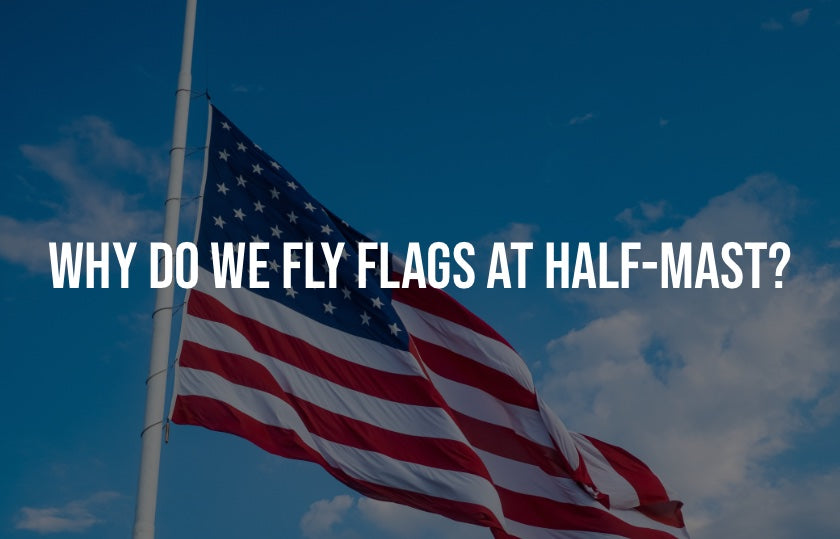We see flags flying at half-staff all the time when we're driving down the highway. It's a common sight not just for Americans but for people all over the world. Flying flags at half-staff, or half-mast, is a symbolic gesture used to honor or commemorate individuals or events of national or international importance. This practice is believed to date back to early naval traditions, where ships would lower their flags to indicate mourning for a fallen captain. The term 'half-mast' once referred to a flag being flown halfway up a ship's mast but is now used interchangeably with the term 'half-staff.'
Over time, the custom extended beyond to include other significant events in other contexts worldwide. In the United States, George Washington is said to have ordered flags at half-mast after the death of Benjamin Franklin in 1790.
Today, the practice of flying flags at half-staff has become a widespread tradition all over the world to commemorate significant events or individuals. Here are some of the reasons why flags fly at half-staff:
-
Mourning and Remembrance: The most common reason for flying flags at half-staff is to express mourning for those who have passed away. When a prominent figure or a member of the armed forces dies, lowering the flag is meant to pay tribute to their service. It's a way for a nation or community to collectively mourn and honor their memory.
-
Tragedies and Loss: Flags are also flown at half-staff to express solidarity and compassion in the face of tragic events that result in significant loss of life. This can include natural disasters, mass shootings, acts of terrorism, or other catastrophic incidents that deeply impact a community or the entire nation. Lowering the flag is a visual reminder of shared grief.
-
National Mourning Days: Governments may designate specific days as national or state mourning days to honor historical events or anniversaries of significant tragedies. On these occasions, flags across the country are flown at half-staff as a sign of respect and remembrance.
-
International Protocol: Lowering the flag to half-staff is also a gesture of respect during international incidents or as a sign of solidarity with other nations facing tragedies or losses. It is a way for countries to show empathy and unity during times of sorrow.
-
Presidential Proclamations: In the United States, the President has the authority to issue proclamations ordering flags to be flown at half-staff for various reasons, such as the death of a former President or other significant figures, or in response to national tragedies. Governors and other public officials may also issue similar proclamations for state-specific occasions.
Flying flags at half-staff is a deeply ingrained tradition that demonstrates a nation's or community's collective sorrow, unity, and respect for those who have left us or have been affected by tragic events. The solemn sight of a lowered flag serves as a poignant reminder of the fragility of life and the importance of coming together in times of loss and grief.
